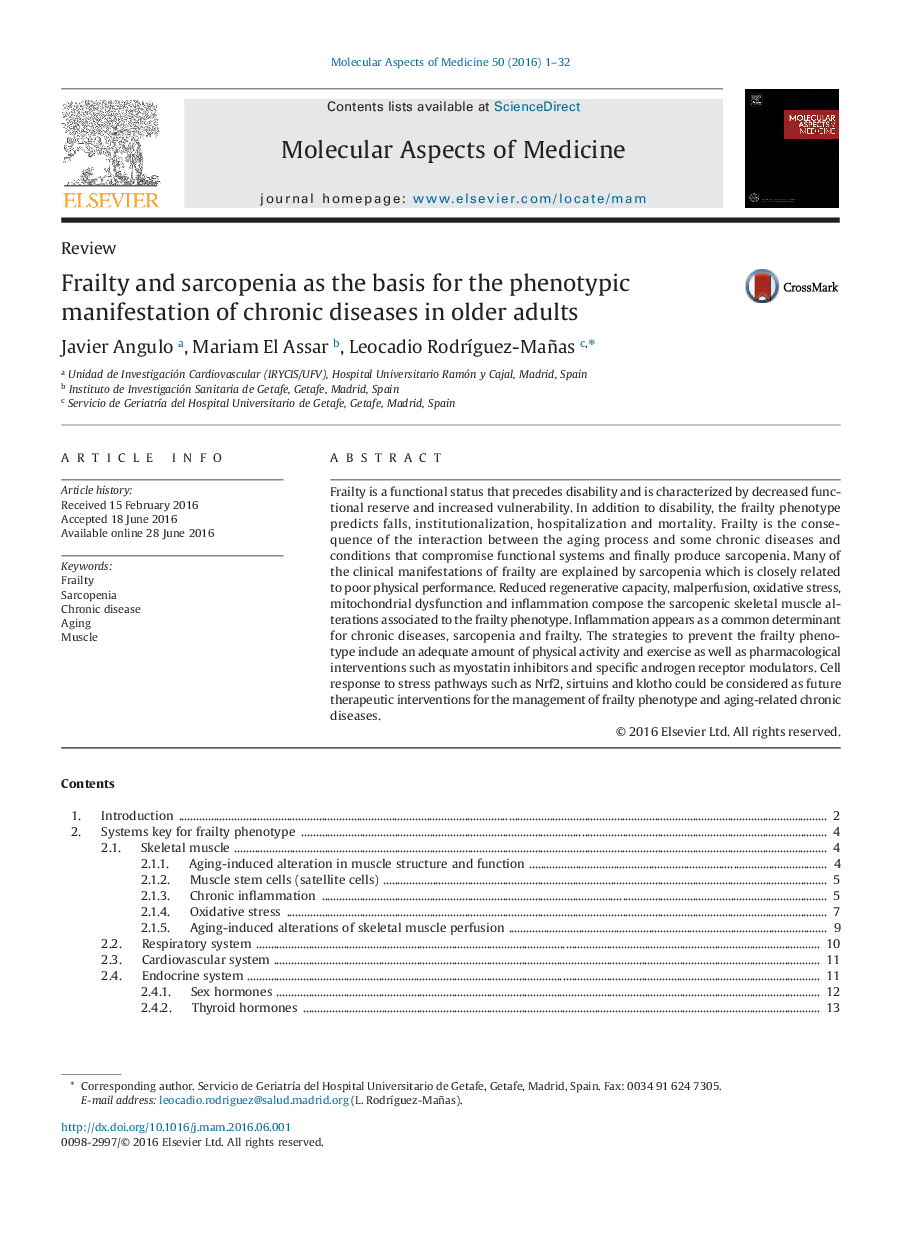| Article ID | Journal | Published Year | Pages | File Type |
|---|---|---|---|---|
| 1995567 | Molecular Aspects of Medicine | 2016 | 32 Pages |
Abstract
Frailty is a functional status that precedes disability and is characterized by decreased functional reserve and increased vulnerability. In addition to disability, the frailty phenotype predicts falls, institutionalization, hospitalization and mortality. Frailty is the consequence of the interaction between the aging process and some chronic diseases and conditions that compromise functional systems and finally produce sarcopenia. Many of the clinical manifestations of frailty are explained by sarcopenia which is closely related to poor physical performance. Reduced regenerative capacity, malperfusion, oxidative stress, mitochondrial dysfunction and inflammation compose the sarcopenic skeletal muscle alterations associated to the frailty phenotype. Inflammation appears as a common determinant for chronic diseases, sarcopenia and frailty. The strategies to prevent the frailty phenotype include an adequate amount of physical activity and exercise as well as pharmacological interventions such as myostatin inhibitors and specific androgen receptor modulators. Cell response to stress pathways such as Nrf2, sirtuins and klotho could be considered as future therapeutic interventions for the management of frailty phenotype and aging-related chronic diseases.
Related Topics
Life Sciences
Biochemistry, Genetics and Molecular Biology
Biochemistry
Authors
Javier Angulo, Mariam El Assar, Leocadio RodrÃguez-Mañas,
